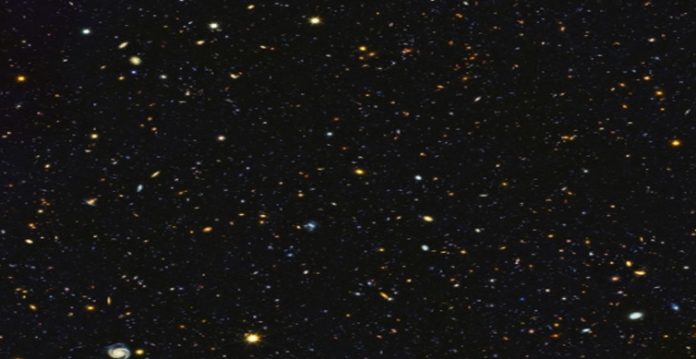An international team of astronomers and scientists have mapped more than a quarter of the northern sky using the Low Frequency Array (LOFAR), a pan-European radio telescope.
The map reveals an astonishingly detailed radio image of more than 4.4 million objects and a very dynamic picture of our Universe, which now has been made public for the first time.
The vast majority of these objects are billions of light years away and are either galaxies that harbour massive black holes or are rapidly growing new stars. Rarer objects that have been discovered include colliding groups of distant galaxies and flaring stars within the Milky Way.
To produce the map, astronomers from Durham University in the UK and Leiden University in the Netherlands deployed state-of-the-art data processing algorithms on high performance computers all over Europe to process 3,500 hours of observations that occupy 8 petabytes of disk space – the equivalent to roughly 20,000 laptops.
ALSO READ: NASA unveils first images from James Webb Space Telescope
This data release, which is by far the largest from the LOFAR Two-metre Sky Survey, presents about a million objects that have never been seen before with any telescope and almost four million objects that are new discoveries at radio wavelengths.
“This project is so exciting to work on. Each time we create a map our screens are filled with new discoveries and objects that have never before been seen by human eyes,” said astronomer Timothy Shimwell of ASTRON and Leiden University.
This data release “is only 27 per cent of the entire survey and we anticipate it will lead to many more scientific breakthroughs in the future, including examining how the largest structures in the Universe grow, how black holes form and evolve, the physics governing the formation of stars in distant galaxies and even detailing the most spectacular phases in the life of stars in our own Galaxy,” he added.
This data presents a major step forward in astrophysics and can be used to search for a wide range of signals, such as those from nearby planets or galaxies right through to faint signatures in the distant Universe, the researchers said.
(This story has been sourced from a third-party syndicated feed, agencies. Raavi Media accepts no responsibility or liability for the dependability, trustworthiness, reliability, and data of the text. Raavi Media management/ythisnews.com reserves the sole right to alter, delete or remove (without notice) the content at its absolute discretion for any reason whatsoever.)







